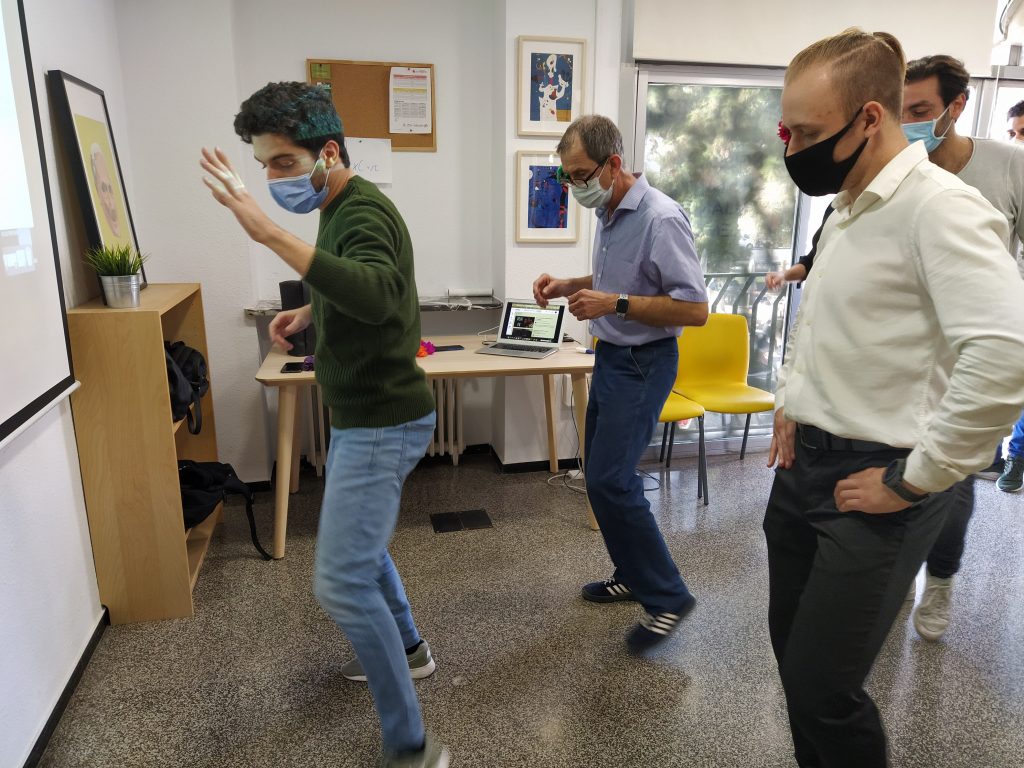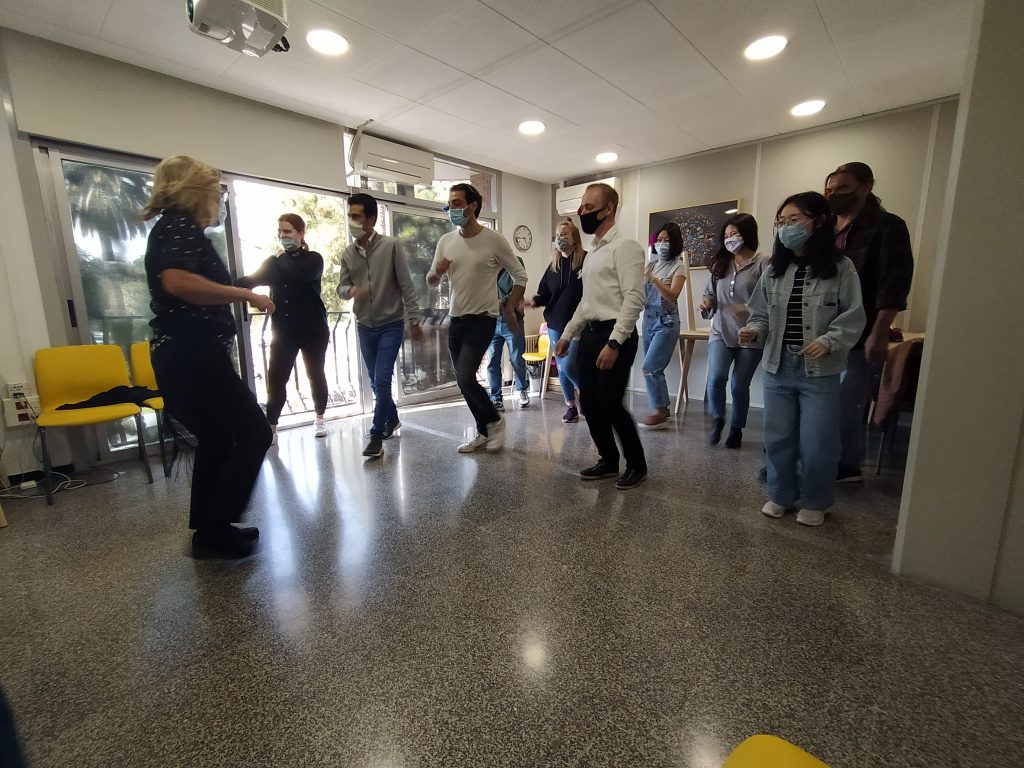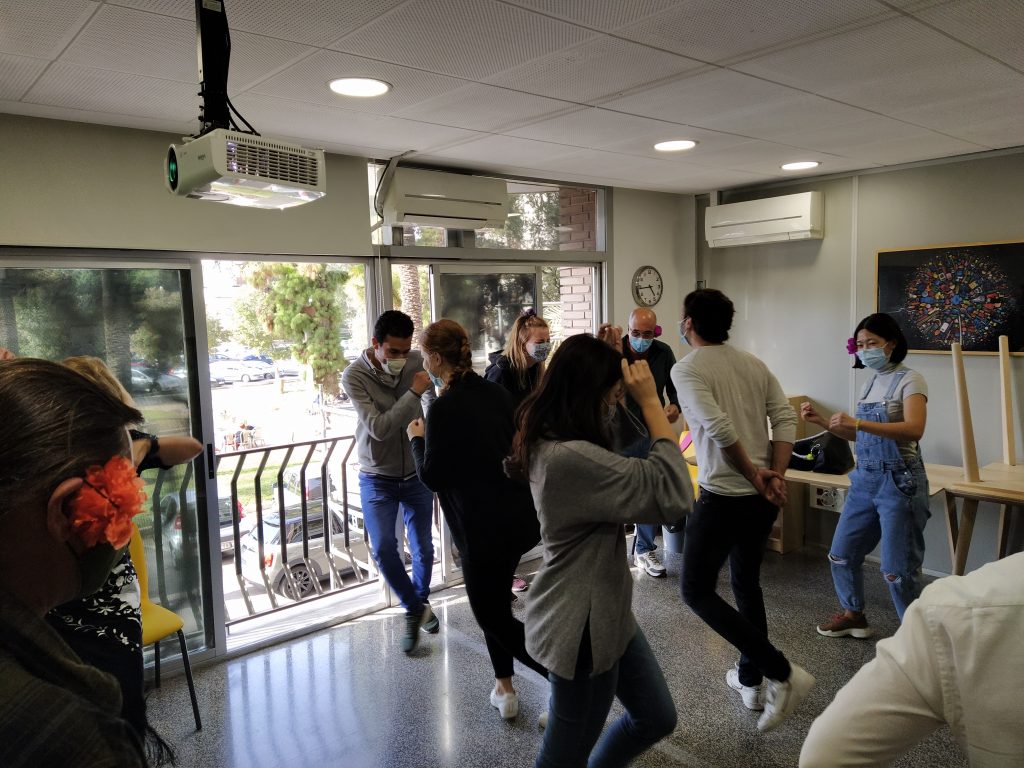Article written by Academia La Pagoda of Valencia.
.
In Academia La Pagoda we programmed a specific session, on April, with the aim of spreading different kinds of dances and music that characterize the festivities and customs held in Spain and Latin America.
Firstly, we projected a Powerpoint in order to provide our students with the main features of each of these dances. Each kind of music and dance were assigned to our teaching board and they were responsible of giving the necessary information.
After the explanation, we divided the students into two large groups. One of them practiced some Spanish dances and the other, the Latin American ones.
The main goal of this activity was involving our students in both groups to make them practice, as much as possible, every kind of dance.

Now we are going to briefly explain the different dances we practiced in the last session.
LAS SEVILLANAS
It has its origins in the region of Andalucía and it’s usually danced in Feria de Abril and El Rocío. Its rhythm is based on 3 times and it’s marked by clapping. The instruments played are the guitar, the castanets and the box drum.
LA JOTA
It’s very popular all over Spain. the dancers always play the castanets and the musicians play guitars or bandurrias. Regional costumes are also used. The lyrics of the songs are based on patriotic and religious topics.
LES DANÇAES
It’s the oldest folkloric dance from the Region of Valencia. It’s formed by men and women, standing in a row one in front of the other, as during the dance the will have to form couples. The rhythm is marked by two typical instruments, which are the “tabal” (a kind of drum) and the “dolçaina” (similar to a flute).
LAS SARDANAS
It has its origins in Catalonia and it’s danced in a circle per groups. During the XIX century, it was only known in Gerona, but in 1906 it was declared “national dance”. The instruments are mainly played by a cobla (a kind of band form Catalonia playing wind instruments and the bass)

LA MUÑEIRA
It has its origins in Galicia but it’s also danced in Asturias. The instruments played are the bagpipe, the tabor, the tambourine and the drum. The name of muñeira recalls the working time in the mills and the leisure time associated with the waiting time.
EL CHOTIS
It has its origin in the region of Bohemia and comes from the Scottish term “scottisch”. It arrived to Madrid on the third of November in 1850. It was popular in Europe during the XIX century. It’s danced in parís and the music comes from a barrel organ.
LA BACHATA
This kind of dance and music has its origin in the Dominican Republic during the 60’. The instrument used are the bongo, the güira, the maracas, the marimba, the trumpet, the claves and the Spanish guitar. It’s danced in pairs and its compass is based on 8 times.
LA SALSA
This kind of dance is a mixture of Afro-Caribbean rhythms (jazz, chachachá, mambo…). It was popularized in New York in the sixties. It’s usually danced in pairs.
EL TANGO
It has its origins in the Region of River Plate. The lyrics of the songs generally express feelings and sadness related to love. The basic instruments are piano, violin and accordion.
LA SAMBA
It has its origins in Africa, although it’s very popular in Brazil. The carnival of Río de Janeiro popularized la Samba between the twenties and thirties. It’s danced following the rhythm of the drums with the legs and shaking the pelvis. During the Carnival, the schools of Samba perform in the Sambódromo.

EL MERENGUE
It comes originally from the Dominican Republic. The couple dances very close one to each other. The man usually puts his right hand on the woman’s hip and his left hand grabs the woman’s. The main instrument played is the guitar.
LA LAMBADA
It was originated in Brasil in the eighties. Its base is called carimbó (sensual dance typical among the carioca women where they wear a miniskirt to attract men ). The word “Lambada” comes from the Portuguese language and means a “strong hit”. It is also called this way because the waving movements of the couple is similar to the movement of the whip.

